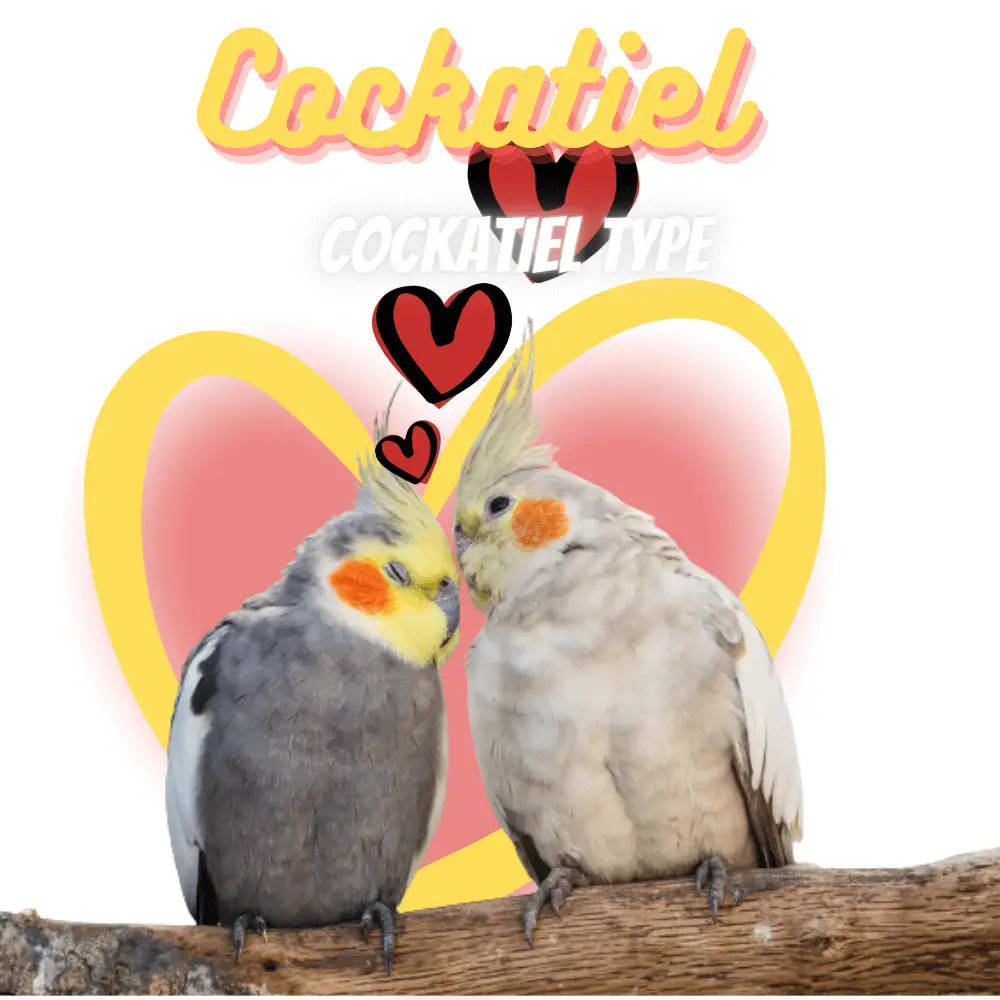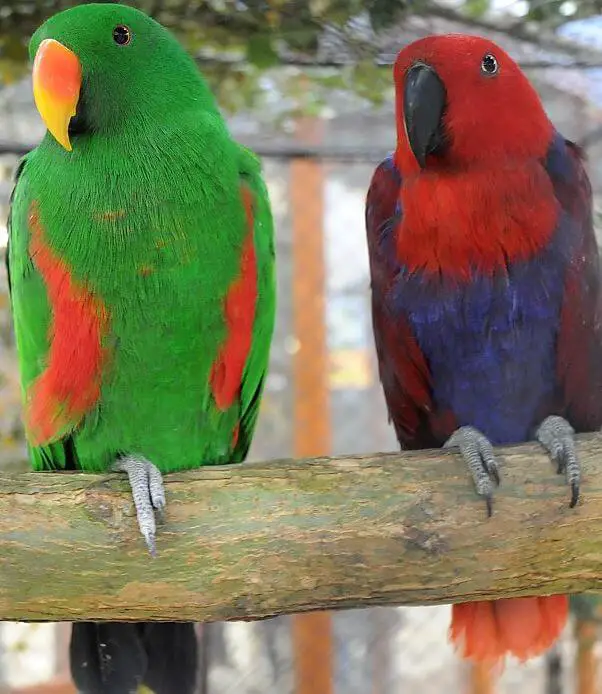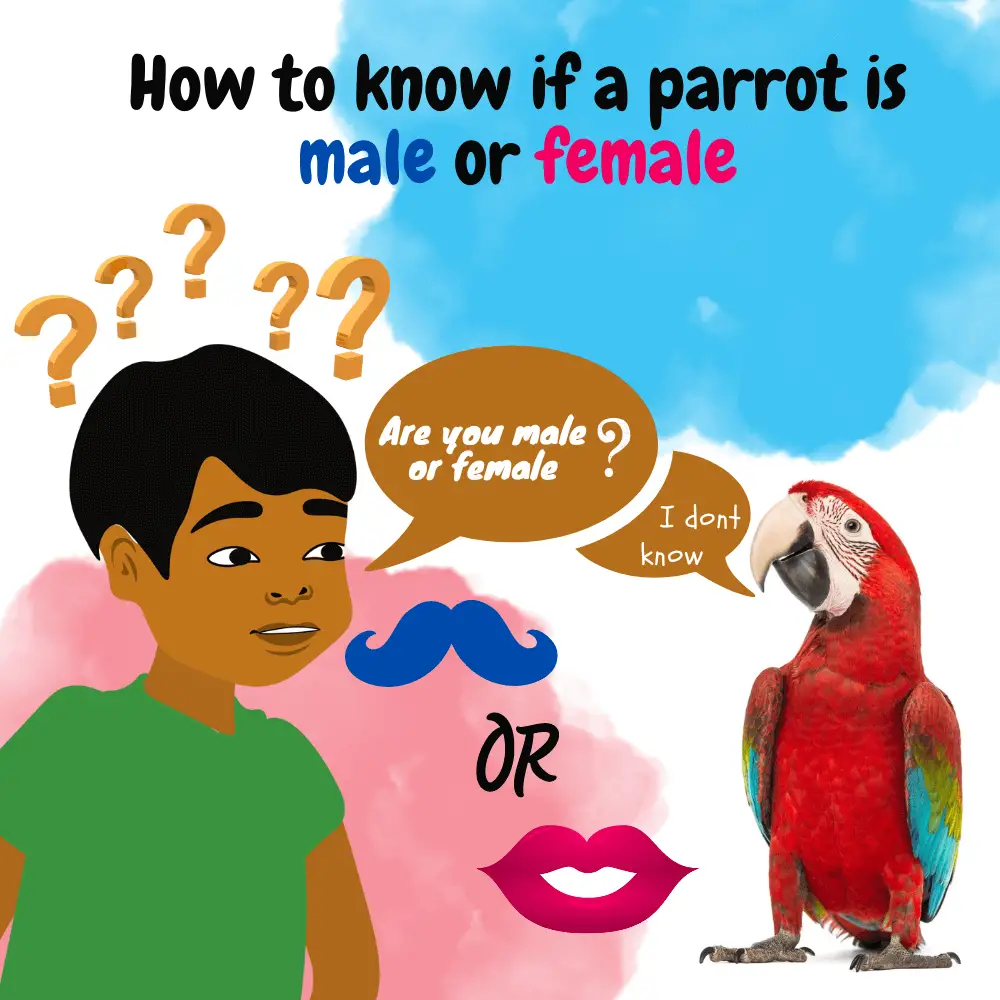Parakeet male or female: Sexual dimorphism (difference in appearance between males and females of a species) is not a rule that can be applied to all parrot species, as most of them cannot tell the difference at first glance between males and females, this only being possible by analysis or an expert.
Palpable differences in appearance between males and females are only seen in certain species of parrots and parakeets. If you keep reading this Animal Planet article, we’ll show you some parrot species with distinct differences between males and females.
Most parrot species do not exhibit sexual dimorphism, unlike the ones we showed you above. Telling them apart can be difficult if you’re not familiar with the particular species, which is why many people ask enthusiasts or professionals to identify the sex of their bird.
By palpation, you can identify the male developing a bump in the pelvic area while the females have a flat area. Another of the most common tests is DNA, but it is inexpensive.
The egg laying clearly reveals that the bird is a female and, finally, we recommend that you do not trust the character, as it can be very changeable.
Cockatiel male or female

Parakeet male or female
In some cockatiels, there is sexual dimorphism. More precisely among the ancestral ones (with cheeks), the pearly ones, and those with a white faces.
The difference between males and females is that females have dark spots in the form of stripes under the tail, while in males this area has a uniform color.
- In Gray Cockatiels, facial differences between females and males are also seen. Females have a lighter yellow and cheek color. Males have a more intense color on these areas of the face.
- In pearl cockatiels, if after molting they keep pearls on their wings, they are females. After the molt, the males lose these characteristic patterns of the species.
- In Whiteface Cockatiels, males have a white mask while in females it is grayish or white, but smaller than males.
Male and female Eclectus parrot
In Eclectus, the difference between males and females is radical. The males are dark green in color, and the beak of this parrot is orange-yellow. The females have a nice mix of red and blue. Their beak is black.

Budgie male or female

Parakeet male or female
Among the budgies, sexual dimorphism is seen in the cere. The wax is the budgie nose, the fleshy area where the parrot’s beak is located.
The core of the common male is dark blue. If the male is an in, his cere is pinkish or lilac. The cere of females is light blue and turns brown when in heat. Young parakeets, both male, and female have a white core.
Among the Australian parakeets, we find the splendid parakeet which is a clear example of sexual dimorphism, since the females do not have the same scarlet fringe as the males on their chests.
Indian ringneck parrot male or female
There are two species of Indian ringneck parakeet: the rose-ringed parakeet and the Alexander parakeet. In both, sexual dimorphism is evident since the male shows a kind of characteristic black collar and the female does not.
This species is known to need daily handling and constant enrichment of their environment and activities, otherwise, they are at risk of suffering from severe stress. They can understand up to 250 different words, which may be why lack of stimulation is so detrimental to this species.
White-fronted amazon male vs female
The white-fronted parrot has an area on its wings that shows differences if it is male or female. This area is called Alula and is located on the front part of the wing where the bone is.
The male white-fronted parrot can be distinguished from its female because the alula has bright red feathers and the female has none, or barely any.
Australian parrots
In Australia, there is a wide variety of parrots, all of which are very valuable. In some species, the differences between males and females are clear. Here are some species with obvious sexual dimorphism.
- Barraband Parakeets: In this species, the female does not have red and yellow colors on the face and throat like the male.
- Australian King Parrot: Females have a green-colored face, head, and throat, while in males these areas are red. Until the age of three, young specimens do not have their final colors.

